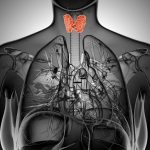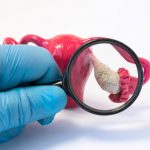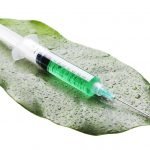Pediatric Hypertension: An Integrative Approach
Krystal Plonski, ND, EAMP
Along with pediatric obesity, cardiovascular disease, and metabolic disease, the rates of pediatric primary hypertension have significantly increased over time, and continue to increase compared to rates of pediatric secondary hypertension.1
In 2004, the National High Blood Pressure Education Program (NHBPEP) Working Group set forth a movement to organize blood pressure percentiles and guidelines for children that were based on age, gender, and height starting at 3 years old. Excluded from the study were children with congenital heart disease, renal disease, history of neonatal intensive care unit (NICU) admission, and other similar conditions.2 These guidelines have been adapted and are readily available online from the National Institutes of Health for ease and point of reference during a patient visit.3,4
Diagnosis
The diagnosis of pediatric hypertension is made when auscultated readings are consistently elevated during 2-3 separate visits over a 1-month period. Both systolic and diastolic measurements are important in pediatric hypertension readings. If the blood pressure is measured multiple times during a visit and there is a discrepancy between the readings, the higher value on either the systolic or diastolic readings determines the blood pressure category. Unlike adult blood pressure readings, pediatric hypertension is not defined by a set of discrete numbers, but rather by percentiles based on age, gender, and height (Table 1).2,5
Table 1. Pediatric Hypertension Guidelines
| Systolic Blood Pressure | Diastolic Blood Pressure | Frequency of BP Measurement | |
| NORMAL | <90th percentile | <90th percentile | Recheck at next year’s physical exam |
| PRE-HYPERTENSION | >90th but <95th percentile
OR If BP exceeds 120/80 mm Hg, even if <90th percentile for age, gender, height |
>90th but <95th percentile
OR If BP exceeds 120/80 mm Hg, even if <90th percentile for age, gender, height |
Repeat BP measurement in the same visit to confirm elevation, then recheck in 6 mo |
| HYPERTENSION | |||
| Stage I HTN | Systolic and/or diastolic BP between the 95th percentile and 5 mm Hg above the 99th percentile | Systolic and/or diastolic BP between the 95th percentile and 5 mm Hg above the 99th percentile | Recheck in 1-2 wk, or sooner if patient is symptomatic. If elevated on 2-3 additional occasions, evaluate in 1 mo or refer to cardiologist or other appropriate referral. |
| Stage II HTN | Systolic and/or diastolic BP >99th percentile plus 5 mm Hg | Systolic and/or diastolic BP >99th percentile plus 5 mm Hg | Evaluate or refer to cardiologist or other appropriate referral (nephrologist) within 1 wk; refer immediately if patient is symptomatic |
Conservative Treatment
Identifying children with hypertension in our offices and during wellness checks can help reduce lifetime morbidity and mortality related to cardiovascular disease, including atherosclerosis, myocardial infarction, increased left ventricular mass, and stroke. Many retrospective studies have shown evidence of adult hypertension beginning in childhood.5,6 Moreover, children and adolescents with severe elevation in blood pressure (stage II hypertension or above) have increased risk of seizures, congestive heart failure, and even stroke.5
According to the 2004 NHBPEP guidelines, children with prehypertension, or children with persistent hypertension, should be counseled on nonpharmacologic therapies. Research has shown that effective nonpharmacologic therapies for childhood hypertension, which coincide with the foundational naturopathic medical tenement of prevention, include weight management, regular daily exercise, avoidance of sedentary activities, and dietary changes. Dietary changes to modify pediatric hypertension include: salt restriction, increased fruit and vegetable consumption, and avoidance of added sugars.6
The longitudinal Bogalusa Heart Study, begun in 1972, evaluated cardiovascular risk factors in children and young adults as clinical evidence for epidemiology of adult heart disease. Based on parameters established in the Bogalusa Heart Study, a more recent study by Haji et al (2006) indicated that obesity in childhood is the single most likely predictor of cardiovascular disease and hypertension in adulthood, specifically left ventricular enlargement, compared to normal-BMI children of the same-aged cohorts.7
Recommendations also include a maximum of 2 hours of screen time per day per child or adolescent, and a minimum of 60 minutes per day of outdoor activity or playtime. Participation in competitive sports should only be limited for children and adolescents who have uncontrolled stage II hypertension, but should not be limited for children with prehypertension, stage I hypertension, or controlled stage II hypertension.5
By counseling a patient or family member about dietary and lifestyle modifications, reduction of other cardiovascular disease factors can also be achieved, such as dyslipidemia. Other lifestyle modifications include avoidance of smoking, drugs, caffeine, and alcohol consumption. If treating a prehypertensive or hypertensive child with nonpharmacologic therapies, with or without the addition of hypertensive medications or herbal prescriptions, close follow-up every 3-6 months must be obtained to ensure target blood pressure measurements and adjustments of treatments.6 Remember that weight reduction not only decreases blood pressure, but also decreases sensitivity to salt, dyslipidemia, and insulin resistance. If a patient is able to reduce weight by about 10 lb, blood pressure can be reduced by 812 mm Hg postweight loss.5
Integrative Treatments
Dash Diet
Currently, Americans eating the Standard American Diet (SAD) consume more than 2300 mg of sodium per day. The Dietary Approaches to Stop Hypertension (DASH) diet is formulated to contain many rich fruits, vegetables, lowfat or nonfat dairy products, and is inherently low in sodium compared to that of the SAD. The DASH diet has been proven effective not only for hypertension, but also prehypertension, insulin resistance, and metabolic syndrome. Outside of the DASH diet, simple sodium restriction and reduction in children and adolescents can reduce blood pressure by 13 mm Hg. DASH recommendations for sodium intake is about 1.2 g/day or less for a child between 4 and 8 years old and 1.5 g/day or less for a child older than 9 years old.5,8
Vitamin D
Vitamin D has several renal-protective effects. It can suppress the renin-angiotensin-aldosterone system, alter vasodilation and contraction of blood vessels, and influence calcium metabolism.9,10 Vitamin D has been shown to additionally have protective effects in metabolic disorders by improving lipid metabolism, decreasing serum glucose, and improving insulin function.9,10 Vitamin D has been shown to have an inverse relationship with blood pressure readings in both children and adults.9,10 An increased serum vitamin D level was shown to be an independent factor for reducing mean systolic and mean diastolic values for Caucasian children and adolescents in Rome, Italy.9
Magnesium
Magnesium regulates blood pressure by directly influencing the contraction and dilation of vasculature through calcium channel blockage of smooth muscle. In a recent study by GuerreroRomero et al, the researchers questioned the influence of hypomagnesemia (defined as a value of <1.8 mg/dL, or <0.74 mmol/L) in Mexican children aged 615 years (grouped in 2 categories, ages 610 and 1115) who had been diagnosed with pre-hypertension and hypertension.11 The prevalence of combined pre-hypertension and hypomagnesemia in the 6 to 10-year-old group was 27.3%, and 36.0% in the 11 to 15-year-old group. The prevalence of hypertension and hypomagnesemia in the 6 to 10-year-old group was 45.6%, and 49.6% in the 11 to 15-year-old group. The study suggests that there is a correlation between low serum magnesium levels and higher rates of pre-hypertension and hypertension in children and adolescents, with greater effects in children aged 610 years.11 Although many adult studies indicate that blood pressure reduction can be achieved with oral magnesium supplementation, no studies yet exist showing this correlation in the pediatric hypertension population.
Potassium
Potassium is another micronutrient that is associated with the ability to lower systolic and diastolic blood pressure through modification of the renin-angiotensin-aldosterone system, vasodilatory effects on smooth muscle, and increasing natriuresis.12,13 Potassium has also shown significant protective effects by lowering blood pressure in the presence of increased sodium within the diet.13
Omega-3 Fatty Acids
Dietary and supplemental fatty acids can lower blood pressure by altering vasoactive peptide signaling. Specifically, atrial natriuretic peptide receptors lower blood pressure by increasing glomerular filtration rates and vasodilation of systemic vessels.14 Moreover, dietary omega-3 fatty acids can decrease the systemic inflammation associated with coronary artery disease.15 Secondary cardiovascular and hypertension benefits include protective changes in lipid metabolism, alteration of platelet functions and fluidity, and decreases in inflammatory response cascades.15
Other Considerations
Although this list of integrative treatments is non- exhaustive, it can be a starting point for treating children and adolescents who have prehypertension or elevated blood pressure without a diagnosis of hypertension.
Furthermore, strongly consider pediatric acupuncture as an adjunctive treatment for pre-hypertension and hypertension. Other treatments may include herbal remedies such as Crataegus oxyacantha, Allium sativum, Taraxacum officinale, and Chinese herbal medicines, as well as Mediterranean diet, vegetarian diet, whole oats, supplemental antioxidants, coenzyme Q10, and homeopathic remedies.12
Conventional Treatments
If a patient’s hypertension is significant or difficult to manage with dietary and lifestyle modifications, referral to a pediatric cardiologist for evaluation and comanagement is recommended. A pediatric cardiologist may discuss the importance of starting pharmacologic therapies to treat pediatric hypertension in order to reduce the risk of premature cardiovascular disease in adulthood.6
According to the 2004 NHBPEP guidelines, it is rare that a child will need antihypertensive medications, since diet and lifestyle play such important roles in reducing elevated pediatric blood pressure measurements. However, any child that exhibits headaches, seizures, changes in mental status, focal neurological complaints, visual changes, chest pain, palpitations, or shortness of breath requires immediate medical intervention. Similarly, any child that is diagnosed with Stage II hypertension, or has 46 months of uncontrolled Stage I hypertension with strict compliance of nonpharmacologic therapy, should be referred for initiation of pharmacologic antihypertensives. Lastly, if a child has stage I hypertension with a significant comorbidity, such as dyslipidemia or diabetes mellitus, or has endorgan damage (left ventricular hypertrophy, renal impairment, or retinopathy), the patient should be started on pharmacologic anti-hypertensive treatments.6 The 2004 guidelines indicate that pediatric patients with established hypertension should obtain an echocardiogram periodically to evaluate for left ventricular hypertrophy, although exact periodicity should be evaluated on an individual basis.5
Research data is limited and often biased regarding the effects anti-hypertensive medications have on children. Outcomes tend to focus solely on blood pressure reduction and not on prevention of end-organ damage.6
Please refer to Table 2 for common anti-hypertensive medications in children.5,6,15-17
Table 2. Conventional Medications for Pediatric Hypertension
| Examples | Indications | Cautions | Nutrient Depletions | |
| ACE Inhibitors | Captopril was the first ACE inhibitor commonly used in pediatric hypertension
Enalapril and lisinopril are longer-acting ACE inhibitors that have replaced captopril |
Widely used | Fosinopril has been shown to reduce blood pressure in children, but is limited to children that weigh >50 kg
Contraindicated in pregnancy; caution in sexually-active girls |
Sodium
Zinc |
| ARBs | Irbesartan
Losartan
|
Widely used | FDA-approved for pediatric hypertension; however, irbesartan failed to prove a beneficial effect in children 616 years of age, therefore is not recommended as an effective pediatric anti-hypertensive agent. Risk of hyperkalemia.
Contraindicated in pregnancy; caution in sexually-active girls |
Sodium
Zinc |
| Beta-blockers | Propranolol was the first medication used to treat pediatric hypertension
Atenolol, metoprolol, and bisoprolol are longer-acting beta-blockers that have largely replaced propanolol |
Widely used | Caution in children diagnosed with asthma, as betablockers can increase airway hyper-responsiveness and bronchial obstruction | CoQ10
Melatonin Chromium |
| Calcium Channel Blockers | Amlodipine (for children aged 617 years) | Calcium channel blockers demonstrate safety, low side-effect profile, and efficacy with children with primary hypertension | Patients who have sick sinus syndrome; however, this is the anti-hypertensive of choice with patients who have diminished renal function or metabolic changes such as hyperkalemia | Potassium
Vitamin D |
| Thiazide Diuretics | Hydrochlorothiazide
Chlorthalidone |
Thiazide diuretics work optimally as an initial therapy in postpubertal adolescents with primary hypertension
Also used in combination with other anti-hypertensive medications (ACE inhibitors and beta-blockers) |
Despite clinical observations, pediatric hypertension specialists avoid using thiazide diuretics as a 1st-line therapy compared to ACE inhibitors, beta-blockers, or calcium channel blockers, based on the diuresis effect and prevention of metabolic complications of hypokalemia, glucose intolerance, and lipid effects | CoQ10
Magnesium Sodium Potassium Zinc Vitamin D Calcium Phosphorus |
(ACE = angiotensin converting enzyme; ARBs = angiotensin II receptor blockers)
Closing Comments
Not only does the entire practice of pediatrics fit into the naturopathic principle of Prevention, but specifically pediatric hypertension is a great example of a condition that can be treated from a whole-person standpoint. (Refer to Table 3 for a summary of guidelines.) Many times, hypertensive readings may coincide with elevations in body mass index, dyslipidemia, or poor dietary or lifestyle habits in a patient. Through counseling of healthy lifestyle and healthy diets for young individuals, optimal health can be achieved and maintained through an individual’s lifespan.
Table 3. Pediatric Hypertension: Summary
| Systolic Blood Pressure | Diastolic Blood pressure | Frequency of BP Measurement | Therapeutic Changes | Pharmacologic Therapy | |
| NORMAL | <90th percentile | <90th percentile | Recheck at next year’s physical exam | Encourage healthy, diet, lifestyle, sleep, and exercise | N/A |
| PRE-HYPERTENSION | ≥90th but <95th percentile
OR If BP exceeds 120/80 mm Hg even if <90th percentile for age, gender, height |
≥90th but <95th percentile
OR If BP exceeds 120/80 mm Hg even if <90th percentile for age, gender, height |
Repeat BP measurement in the same visit to confirm elevation, then recheck in 6 mo | Weight management
Exercise management
Diet management |
N/A unless chronic kidney disease, diabetes mellitus, heart failure, or left ventricular hypertrophy are part of the patient’s clinical picture |
| HYPERTENSION | |||||
| Stage I HTN | Systolic and/or diastolic BP between the 95th percentile and 5 mm Hg above the 99th percentile | Systolic and/or diastolic BP between the 95th percentile and 5 mm Hg above the 99th percentile | Recheck in 1-2 wk, or sooner if patient is symptomatic.
If elevated on 2-3 additional occasions, evaluate in 1 mo or refer to cardiologist or other appropriate referral. |
Weight management
Exercise management
Diet management |
Initiate therapy if compliance for 4-6 mo does not lead to changes in BP readings |
| Stage II HTN | Systolic and/or diastolic BP ≥99th percentile plus 5 mm Hg | Systolic and/or diastolic BP >99th percentile plus 5 mmHg | Evaluate or refer to cardiologist or other appropriate referral (nephrologist) within 1 wk; refer immediately if patient is symptomatic | Weight management
Exercise management
Diet management |
Initiate therapy |
 Krystal Plonski, ND, EAMP, is a graduate of Bastyr University and is a 2nd-year resident at Cascade Natural Medicine in Kirkland, WA. Dr Plonski has a focus in pediatric primary care, and believes naturopathic medicine treatment that includes educating children about the foundation of a healthy lifestyle and prevention of disease is one of the most important forms of healthcare today.
Krystal Plonski, ND, EAMP, is a graduate of Bastyr University and is a 2nd-year resident at Cascade Natural Medicine in Kirkland, WA. Dr Plonski has a focus in pediatric primary care, and believes naturopathic medicine treatment that includes educating children about the foundation of a healthy lifestyle and prevention of disease is one of the most important forms of healthcare today.
References:
- McInerny TK, Adam HM, Campbell DE, et al, eds. American Academy of Pediatrics Textbook of Pediatric Care. Washington, DC: American Academy of Pediatrics; 2009.
- Mattoo Evaluation of hypertension in children and adolescents. Last updated March 16, 2016. UpToDate Web site. http://www.uptodate.com/contents/evaluation-of-hypertension-in-children-and-adolescents. Accessed March31,2016.
- National Institutes of Health. The Fourth Report on the Diagnosis, Evaluation, and Treatment of High Blood Pressure in Children and Adolescents. Table 3: Blood Pressure Levels for Boys by Age and Height Percentile. NIH Web site. http://www.cc.nih.gov/ccc/pedweb/pedsstaff/bptable1.PDF. Accessed April 5, 2016.
- National Institutes of Health. The Fourth Report on the Diagnosis, Evaluation, and Treatment of High Blood Pressure in Children and Adolescents. Table 3: Blood Pressure Levels for Girls by Age and Height Percentile. NIH Web site. http://www.cc.nih.gov/ccc/pedweb/pedsstaff/bptable2.PDF. Accessed April 5, 2016.
- US Department of Health and Human Services. The Fourth Report on the Diagnosis, Evaluation, and Treatment of High Blood Pressure in Children and Revised May 2005. Available at: https://www.nhlbi.nih.gov/files/docs/resources/heart/hbp_ped.pdf. Accessed March 30, 2016.
- Mattoo Ambulatory (outpatient) treatment of hypertension in children and adolescents. Last updated March 14, 2016. UpToDate Web site. http://www.uptodate.com/contents/ambulatory-outpatient-treatment-of-hypertension-in-children-and-adolescents. AccessedMarch30,2016.
- Haji SA, Ulusoy RE, Patel DA, et al. Predictors of left ventricular dilatation in young adults (from the Bogalusa Heart Study). Am J Cardiol. 2006;98(9):1234-1237.
- Low Salt, Low Sodium, and the DASH Last updated April 4, 2016. DashDiet Web site. http://dashdiet.org/low_salt_diet.asp. Accessed March 30, 2016.
- Pacifico L, Anania C, Osborn JF, et Low 25(OH)D3 levels are associated with total adiposity, metabolic syndrome, and hypertension in Caucasian children and adolescents. Eur J Endocrinol.2011;165(4):603-611.
- Reis JP, Von Mühlen D, Miller ER 3rd, et al. Vitamin D status and cardiometabolic risk factors in the United States adolescent Pediatrics. 2009;124(3):e371-e379.
- GuerreroRomero F, Rodríguez-Morán M, Hernández-Ronquillo G, et al. Low Serum Magnesium Levels and Its Association with High Blood Pressure in J Pediatr. 2016;168:9398.e1.
- Gaby Nutritional Medicine. Concord, NH: Fritz Perlberg Publishing; 2011.
- Buendia JR, Bradlee M, Daniels SR, et al. Longitudinal effects of dietary sodium and potassium on blood pressure in adolescent JAMA Pediatr. 2015;169(6):560568.
- Awazu M, Yared A, Swift LL, et al. Dietary fatty acid modulates glomerular atrial natriuretic peptide Kidney Int. 1992;42(2):265271.
- Jung UJ, Torrejon C, Tighe AP, Deckelbaum n-3 Fatty acids and cardiovascular disease: mechanisms underlying beneficial effects. Am J Clin Nutr. 2008;87(6):2003S2009S. Available at: http://ajcn.nutrition.org/content/87/6/2003S.full#citedby. Accessed April 5, 2016.
- Feld LG, Waz Treatment of hypertension. In: Barratt TM, Avner ED, Harmon WE, eds. Pediatric Nephrology. Philadelphia, PA: Lippincott Williams & Wilkins; 1999.
- Drug Information Handbook: A Comprehensive Resource for all Clinicians and Healthcare Professionals. 23rd Lexicomp Drug Reference Handbooks. Hudson, OH: LexiComp; 2014.










